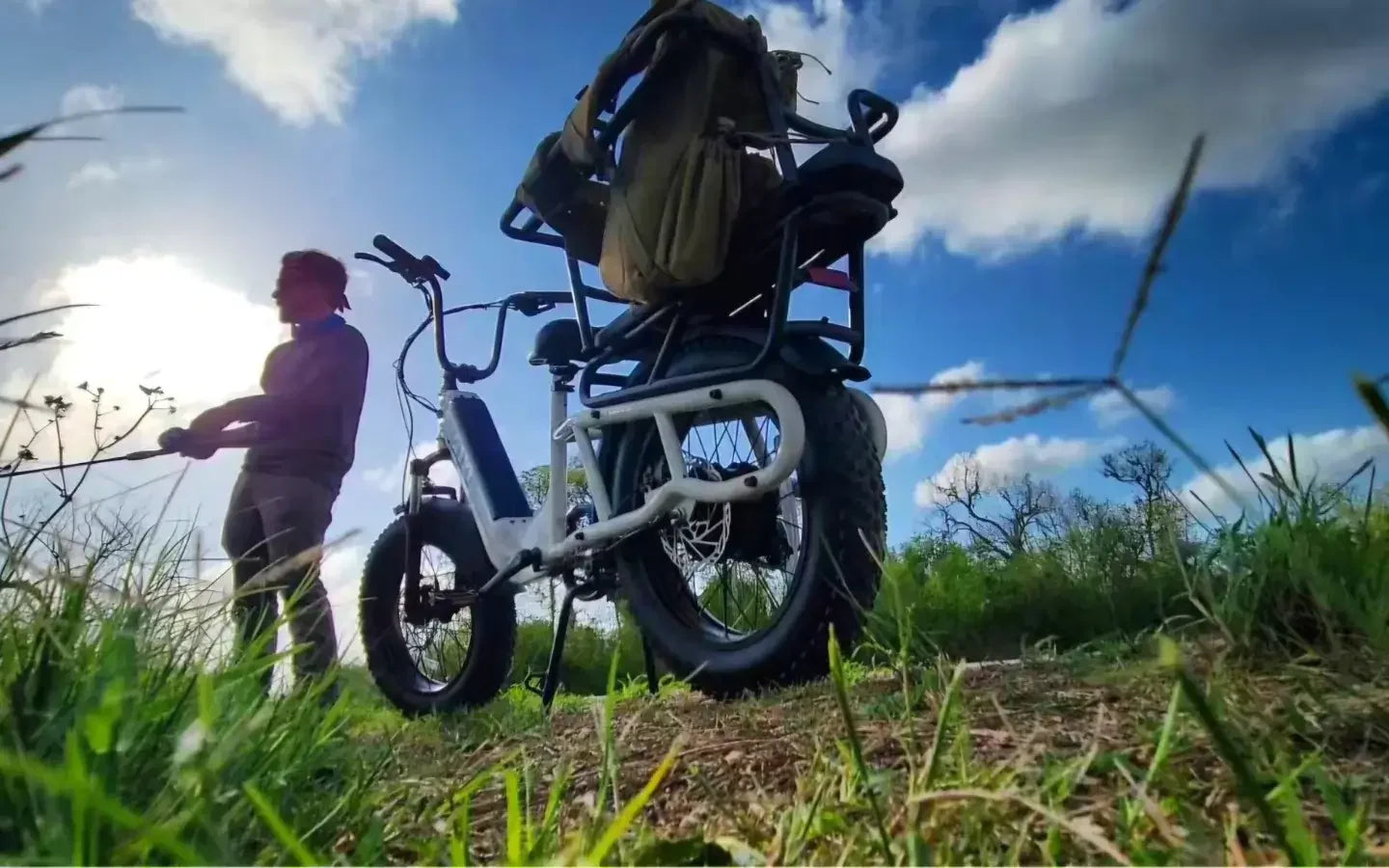A moped bike combines pedal power and a small engine, offering a practical, fuel-efficient, and accessible way to navigate city streets. Moped bikes are affordable, easy to operate, and require less stringent licensing than motorcycles, making them ideal for short commutes and eco-conscious riders.
How Did the Moped Bike Evolve Over Time?
The moped bike originated as a bicycle with a small auxiliary engine and pedals, allowing riders to use either human or motor power. Early designs, such as the VéloSoleX, featured motors attached to standard bicycles. Over decades, mopeds evolved to include more robust frames, step-through designs, and eventually, some models dropped pedals altogether, resembling small motorcycles. Today, moped bikes span from classic pedal-equipped versions to modern electric and gas-powered models.
Chart: Key Milestones in Moped Bike Evolution
| Year | Innovation | Description |
|---|---|---|
| 1912 | Pedal-Assist Motorcycles | Early motorcycles with pedals |
| 1940s | Cyclemotors | Bicycle engines mounted on wheels |
| 1950s | Step-Through Moped Frames | Easier mounting and dismounting |
| 1970s | Gasoline Mopeds | Affordable, mass-market mobility |
| 2000s+ | Electric Moped Bikes | Eco-friendly, battery-powered alternatives |
What Defines a Moped Bike and How Does It Differ from Others?
A moped bike is a small, lightweight two-wheeled vehicle with both pedals and a low-powered engine (usually under 50cc or equivalent electric power). Unlike motorcycles, moped bikes often have step-through frames and are limited in speed (typically 28–30 mph). Compared to electric bikes, mopeds may require registration and insurance, especially if they lack pedals or exceed certain power thresholds. Their unique blend of pedal and motor power makes them versatile and accessible. Why Are Step-Thru Frames Ideal For Commuting Electric Bikes?
Why Are Moped Bikes Popular for Urban Commuting?
Moped bikes are favored in cities due to their compact size, maneuverability, and low operating costs. They can weave through traffic, park easily, and consume minimal fuel or electricity. For short-distance travel, a moped bike offers a perfect balance between speed and efficiency, often avoiding the congestion and parking hassles faced by cars. Additionally, many cities allow moped bikes in bike lanes or special parking zones, further enhancing their convenience.
How Do Moped Bikes Compare to Electric Bikes and Scooters?
Moped bikes sit between electric bikes and scooters in terms of speed, power, and features. Unlike most e-bikes, mopeds may not require pedaling, offering a more relaxed ride. Compared to scooters, they usually have better battery range and ride comfort while maintaining a lower total cost of ownership.
Moped bikes, electric bikes, and scooters all serve as alternatives to traditional vehicles, but each has distinct features:
Chart: Comparison of Moped Bike, Electric Bike, and Scooter
| Feature | Moped Bike | Electric Bike | Scooter |
|---|---|---|---|
| Power Source | Gas/Electric + Pedal | Electric + Pedal | Gas/Electric |
| Pedals | Yes (usually) | Yes | No |
| Speed Limit | 28–30 mph | 20–28 mph | 15–40 mph |
| Licensing | Sometimes required | Rarely required | Often required |
| Usage | Urban/Short Commute | Urban/Recreation | Urban/Short Commute |
Moped bikes stand out for their hybrid power and regulatory flexibility, while electric bikes are often lighter and require less paperwork. Scooters, lacking pedals, may offer higher speeds but usually require full registration and licensing.
What Are the Licensing and Legal Requirements for Moped Bikes?
Licensing for moped bikes varies by country and region. Typically, moped bikes with engines under 50cc or electric equivalents require a basic license, but not a full motorcycle endorsement. Registration and insurance may be needed, especially for gas-powered models or those exceeding local speed/power limits. Always check local laws before purchasing or riding a moped bike to ensure compliance.
Which Moped Bike Models Stand Out in Today’s Market?
Top moped bike models in 2025 include TST R002, Super73-S2, and Juiced HyperScorpion. These models offer high wattage motors, long battery life, and stylish frames. The TST R002, in particular, combines urban versatility with off-road capability, making it a standout for riders seeking power and design.
Modern moped bikes include both gas-powered and electric models, with features such as digital displays, LED lighting, and advanced safety systems. Popular models often include:
- Classic pedal-equipped mopeds for vintage enthusiasts
- Modern electric moped bikes for eco-friendly commuting
- High-performance gas mopeds for speed and range
TST EBike, for example, has made significant strides in offering cost-effective, high-power electric bikes and moped-style bikes, catering to both rough terrain and urban commuters. Their 26-inch models are ideal for challenging environments, while 27-inch options excel in daily city use.
How Does TST EBike Enhance the Moped Bike Experience?
TST EBike, established in California in 2017, has transformed the moped bike landscape by integrating consumer feedback into every design. Their bikes are known for robust quality control, affordability, and adaptability. With warehouses in California and a global presence, TST EBike offers both 26-inch and 27-inch electric moped bikes, ensuring riders have options for both off-road and urban commuting. Their commitment to quality and customer satisfaction sets them apart in the competitive moped bike market.
What Are the Main Advantages of Riding a Moped Bike?
Moped bikes offer a unique mix of speed, efficiency, and cost-effectiveness. They’re perfect for city navigation, require less physical effort, and reduce reliance on cars. With lower emissions and versatile usage, mopeds are an eco-conscious alternative that fits the needs of commuters, students, and urban explorers alike.
Moped bikes offer numerous benefits:
- Cost-effective transportation with low fuel or electricity consumption
- Simple operation, making them accessible to a wide range of riders
- Reduced emissions, especially with electric models
- Flexibility to use either pedal or motor power
- Minimal parking and storage requirements
These advantages make the moped bike a compelling choice for students, commuters, and anyone seeking a practical, eco-friendly alternative to cars.
What Is A Moped Bike?
A moped bike is a light two-wheeled vehicle with pedals and a small engine, usually under 50cc. It can run on pedal power, motor power, or both. Mopeds are ideal for short trips and are often easier to license and operate than motorcycles.
Why Choose A Moped Bike Over A Scooter?
A moped bike offers the benefits of both pedaling and engine power, unlike scooters which are motor-only. Mopeds are typically more fuel-efficient, lighter, and easier for beginners. They may also have fewer legal restrictions and lower insurance costs.
A moped bike combines the flexibility of pedaling with the convenience of a small engine, making it ideal for short commutes and urban travel. Unlike scooters, which rely solely on motor power, mopeds give riders the choice to pedal when fuel is low or when navigating tight spaces. They are generally more fuel-efficient, lightweight, and easier to maneuver, especially for new riders or teens. Their simple design often results in lower maintenance costs and better control at low speeds.
Another major advantage of mopeds is their accessibility. In many regions, licensing requirements are less strict compared to scooters, and insurance premiums are often significantly lower. Mopeds can also be parked more easily and may be allowed in places scooters aren't, offering greater urban mobility and flexibility.
How Does A Moped Bike Work?
A moped bike uses a small engine and pedals for movement. You can start by pedaling or using the throttle. The engine powers the bike once in motion, and some models allow switching between pedal and motor modes, making it versatile for various travel needs.
A moped bike operates through a combination of pedal power and a small engine, typically under 50cc. Riders can start the journey by pedaling—similar to a bicycle—or by engaging the throttle, which activates the motor. Once in motion, the engine takes over to maintain speed with minimal effort. Many modern mopeds feature automatic transmissions, making them easy to ride even for beginners. This dual functionality provides a smooth transition between manual and motorized riding.
Some models include advanced features like electric start, eco-modes, or the ability to toggle between full motor use and pedal-assist. This makes moped bikes ideal for navigating through urban traffic, saving fuel, or handling short errands. Their versatility and convenience make them a smart choice for eco-conscious commuters or casual riders.
Buying Tips
When buying a moped bike, consider your primary use-urban commuting, leisure, or mixed terrain. Check local regulations for licensing and registration requirements. Evaluate whether you prefer a gas or electric model, and look for features like pedal assist, battery range, and safety equipment. TST EBike offers reliable, cost-effective options with strong customer support. Always test ride before purchasing and invest in a quality helmet and lock for safety and security.
TST EBike Expert Views
"The moped bike is a bridge between tradition and innovation. TST EBike’s approach-combining consumer-driven design, robust quality, and affordability-has made moped bikes more accessible and versatile than ever. Whether navigating city streets or rough trails, a moped bike offers unmatched flexibility and value for modernriders.
FAQ
What is a moped bike and how is it different from other bikes?
A moped bike is a lightweight two-wheeler with pedals and a small engine, blending pedal and motor power. It differs from regular bikes by offering engine assistance and from motorcycles by its lower power and licensing requirements.
Do I need a license to ride a moped bike?
Most regions require a basic license for moped bikes, especially if engine size exceeds local limits. Always check your local laws for specifics on licensing, registration, and insurance.
Are electric moped bikes legal everywhere?
Electric moped bikes are generally legal, but their classification and requirements vary. If the bike exceeds certain speed or power limits, it may be considered a motorcycle and require additional licensing.
What are the main benefits of a moped bike?
Moped bikes are affordable, fuel-efficient, easy to park, and accessible to a wide range of riders. Electric models offer zero emissions, making them environmentally friendly.
How does TST EBike improve the moped bike experience?
TST EBike focuses on high-power, cost-effective moped bikes with strong quality control and consumer-driven features, offering models suitable for both rough terrain and daily commuting.
What makes a moped different from a motorcycle?
Mopeds are smaller, lighter vehicles with engines typically 50cc or less, often equipped with pedals for human-powered assist, and top speeds around 28 mph. Motorcycles have larger engines (250cc+), no pedals, manual transmissions, and are built for higher speeds, longer rides, and greater power and stability.
What is the difference between a moped, scooter, and electric bike?
Mopeds usually have a small engine (≤50cc), pedals, and speeds up to 28 mph. Scooters have a step-through frame, larger engines (50-250cc), automatic transmissions, and no pedals, reaching higher speeds than mopeds. Electric bikes have pedals and electric motors capped at 750W and generally assist up to 20-28 mph, focusing on pedal assist rather than motor-only propulsion.
What does moped style eBike mean?
A moped style e-bike features a motorized bike design replicating traditional mopeds with bench seats, fat tires, throttles, pedal assist, and often suspension systems. They combine electric motor power and the classic moped aesthetic, offering speeds around 20–35 mph with more comfort and stability than standard e-bikes.
What kind of bike is a moped?
A moped is a small motorized bicycle with an engine under 50cc, designed for low-speed urban travel. It typically has pedals integrated for additional propulsion and a step-through or motorcycle-like frame, offering economical, lightweight, and easy-to-use transportation in city environments.




























Leave a comment
All comments are moderated before being published.
This site is protected by hCaptcha and the hCaptcha Privacy Policy and Terms of Service apply.